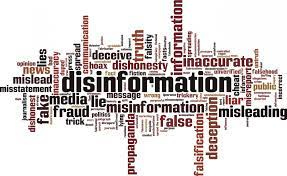Trust and Safety companies should target middle- and high-school students
Creating content for teachers will help to inoculate young people against online disinformation.
Teaching history and social studies to middle school and high school students is no easy task. Under normal conditions, teachers have to contend with students’ raging hormones, students’ lack of attention span engendered by the Internet, and normal parental anxiety about grades. This description basically characterizes the factors I faced when I taught History in some of the most elite private schools in the country. I left classroom teaching in 2019. Things have changed since then.
In History and Social Studies classes in particular, the heat has been turned up on teachers because the political climate is warming faster than the actual climate is changing… that that latter statement would be controversial many classrooms today, because is acknowledges that global warming is real.
Trust and Safety companies can play a role in helping History teachers shape their students into active global citizens. Much of the research conducted by teams at places like ActiveFence, TrustLab, and Spectrum Labs can be transformed into content that is usable for teachers. Such companies could even adapt some of their webinars to be used by teachers. For example, ActiveFence just put out a wonderful webinar on election disinformation. I hope that all teachers reading this will watch it.
While Trust and Safety companies focus on creating tools and producing research for online platforms to use to combat all types of bad content, including hate, harassment, violence, CSAM, misinformation, and disinformation, I think we can all agree that stopping the content only after it reaches major platforms is not enough to prevent the larger spread of such content, especially disinformation.
The authors of A Lot of People Are Saying note that conspiracy theories in the modern age are spread via repetition. Rather than presenting any kind of (however dubious) evidence, the very fact of the repetition gives credence to bonkers conspiracy theories. We need to stop people from repeating bullshit, even if they are merely commenting on it.
Trust and Safety comes in here. Let’s work with educators to develop programming for schools that shows students how to identify bad websites.
Take, for example, the website of the so-called “Institute for Historical Review.” That website (which is not linked here; that is a link to the Southern Poverty Law Center) is an antisemitic propaganda machine whose singular purpose is to gift-wrap Holocaust denial in a fashion that makes it seem like legitimate history. When I taught a course on the Holocaust at the University of Wisconsin-Madison, I had a handful of students quote this website and its “journal” in their papers. But, if students know what to look for, they can identify the site as being the product of bad actors.
Similarly, YouTube continues to allow videos from an organization that masquerades under the title “U” as in “university”—Prager U. This organization and its videos propagate all manner of lies and filth, and are permitted to do so under a banner of legitimacy. If we cannot convince YouTube to ban these insidious videos, how can we protect easily-swayed young people from falling into their mind traps?
Again, Trust and Safety organizations can help. If it hasn’t been clear already, I think that companies that are dedicated to Trust and Safety issues, especially misinformation and disinformation, can play a unique role offline in combatting the scourge of spreading lies and hate online. We can do this by teaching teachers to inform students about how to identify bullshit when they see it.
Here are some questions that teachers can pose to their students—but this is just a start:
Where did you find this information? Can you corroborate it anywhere else?
Is the language surrounding the information extreme or inflammatory? Does the source rely on opinions instead of facts?
Why do you believe this story?
Is there another side to this story that has been omitted from the article or post at hand? If so, why do you think it has been left out?
This is a place to get started that can work with any story. But if T&S teams can create content for teachers to use in dealing with conspiracy theories, lies, and other disinformation as they arise, then teachers will be better prepared to handle the onslaught of contentiousness in the classroom—and thus better prepared to arm our children against believing lies and deliberately misleading information on the Internet.


